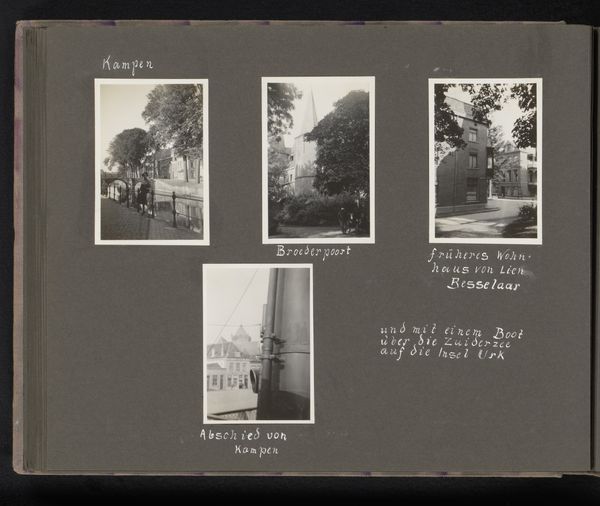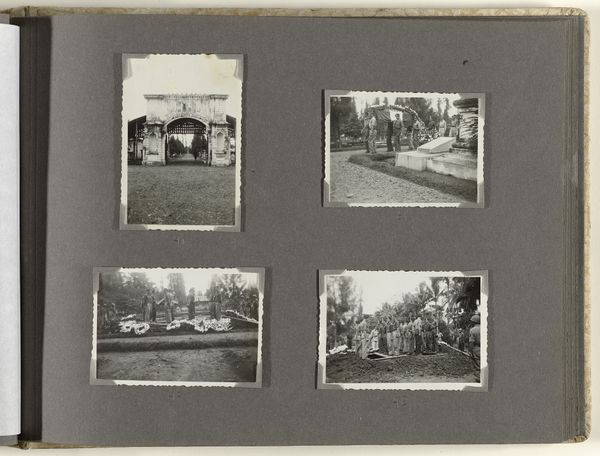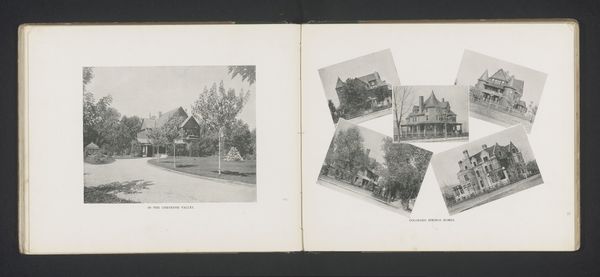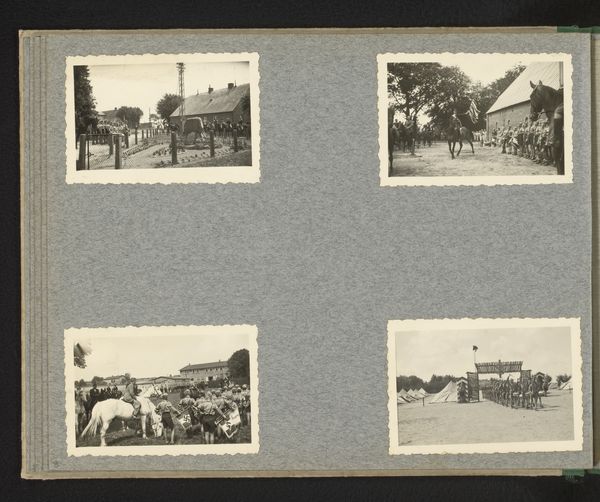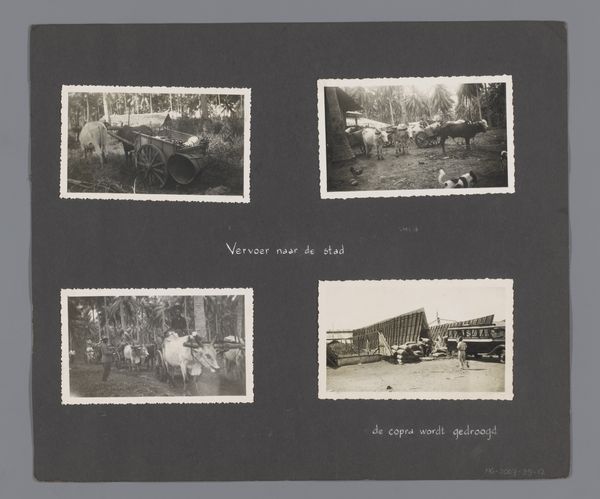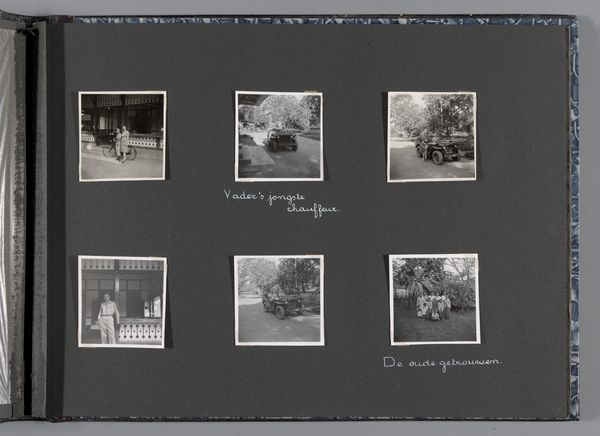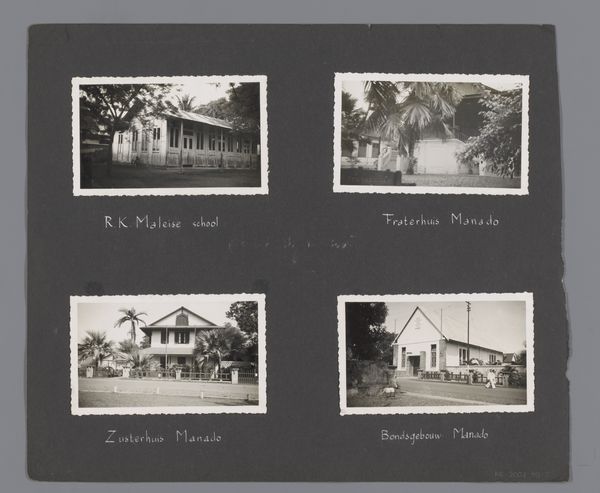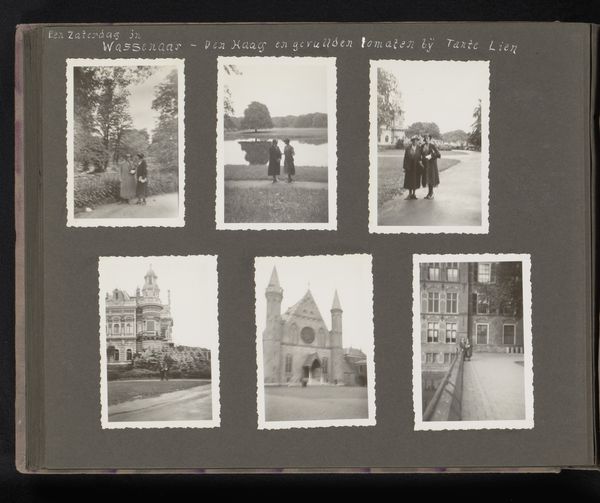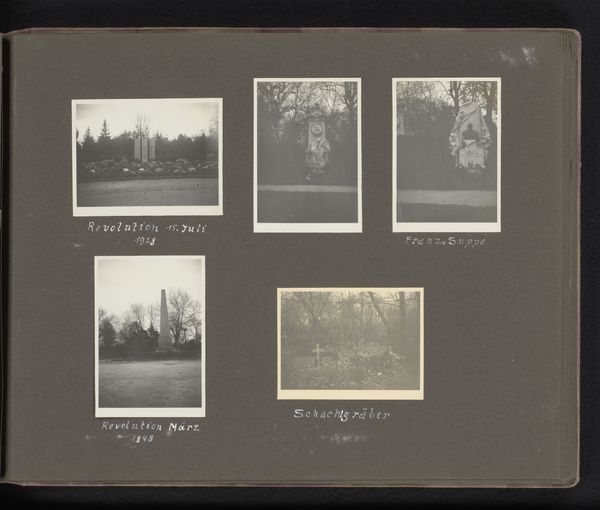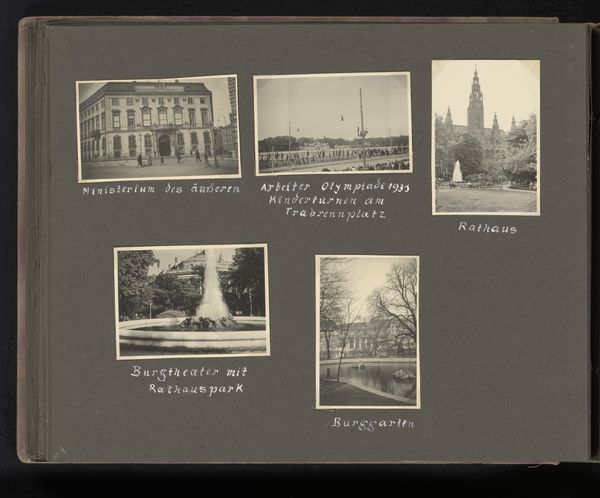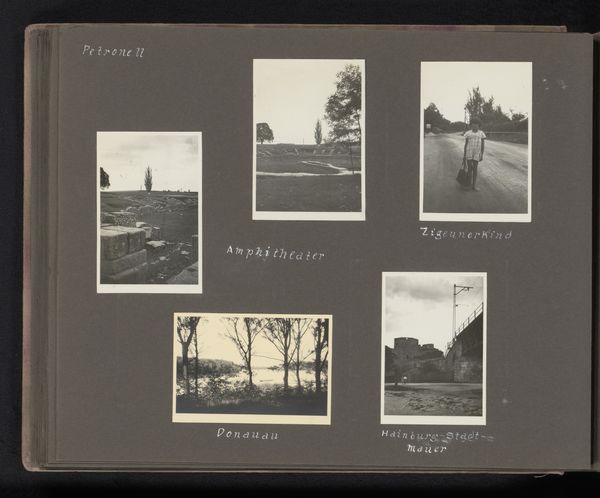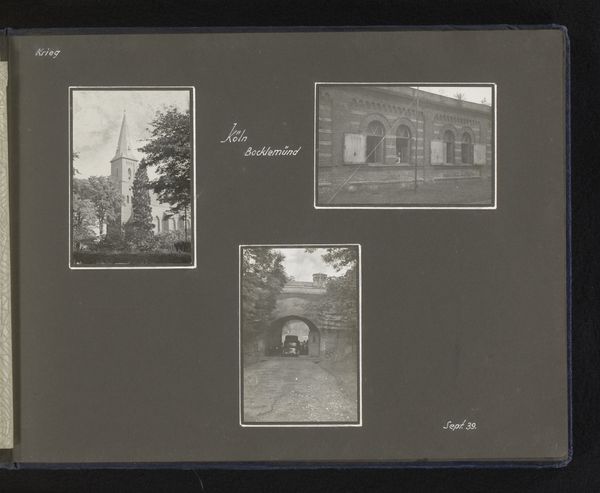
photography, gelatin-silver-print
#
portrait
#
african-art
#
landscape
#
indigenism
#
street-photography
#
photography
#
gelatin-silver-print
Dimensions: height 267 mm, width 318 mm
Copyright: Rijks Museum: Open Domain
Curator: This is a gelatin silver print photograph from the 1930s, titled "Op Celebes," offering snapshots of indigenous life. The photo includes scenes labeled with handwritten captions "Inlands Huis," "Meer van Tondano," "In de stad Manado," and "Wie gaat er mee?" Editor: At first glance, the entire photo collection feels like a form of documentation— almost clinical and dehumanizing in a way that's typical of that era's gaze on indigenous populations, but there's something uniquely personal in each of them as well. Curator: Indeed. The context is key here. We must address photography’s role in colonial enterprises. Images like this were frequently used to construct narratives that emphasized the “otherness” and assumed backwardness of colonized peoples, particularly in Southeast Asia. These images contribute to the construction of identity in a manner that reflects dominant, often exploitative, cultural power dynamics. Editor: I see what you mean. The subjects appear staged, particularly in "Inlands Huis". But do you think the staging could imply something different than simply documenting the “primitive native?” Maybe asserting the presence of their culture as more than a shadow against Western structures? Curator: Potentially, but we have to interrogate whether this is wishful thinking on our part, influenced by a contemporary desire for more nuanced portrayals. Even in a pose, there’s an assertion of space. How can the arrangement and framing by the photographer become complicated when analyzing the role of subjectivities and power dynamics involved in visual representations. Editor: Right. And looking at "Wie gaat er mee?", I get a sense of the mundane, a brief pause. While the composition is clearly structured, there is more than just Western ideals dictating how to picture native Indonesian lives. Curator: I concur. A close look tells me to focus on themes of cultural intersectionality and visual autonomy against institutional and structural marginalization, and those complexities embedded within the simple acts of documentation and narrative building, rather than taking the image simply at its most basic. Editor: Exactly. There's more to unearth, as the photographer invites the viewer to observe beyond just taking note of "exotic" scenes, instead consider the complexities of how cultural values and identity shape how we represent, perceive, and, more importantly, challenge the idea that history is seen, understood, and then told only through Western narratives. Curator: It shows us that in the act of portraying, the politics of imagery should allow us to interrogate how different power structures dictate those images, or fail to. Editor: An apt reminder that history can show both truth, and manipulations thereof.
Comments
No comments
Be the first to comment and join the conversation on the ultimate creative platform.
